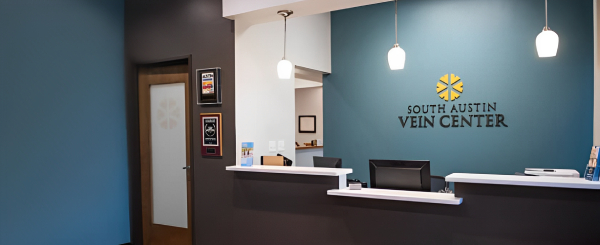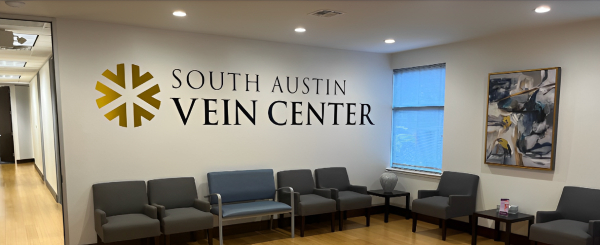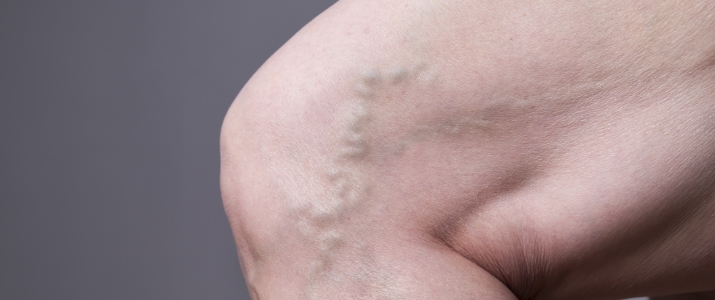
What is Vein Disease?
If you suffer from problems related to varicose and spider veins, you are not alone! Venous insufficiency also known as venous reflux disease, is the most common cause of varicose veins and affects nearly 30 million adults in the United States.
Vein Anatomy
Although veins and arteries are both part of the cardiovascular system, they have very different functions. For the most part, arteries transport oxygen-rich blood away from the heart and veins return oxygen-depleted blood back to the heart. In a person’s leg there are two sets of veins, the deep veins that are under the muscle sheath and the superficial veins that are outside of the muscle compartment closer to the skin. There are also veins called perforators that act like bridges connecting the two sets of veins.
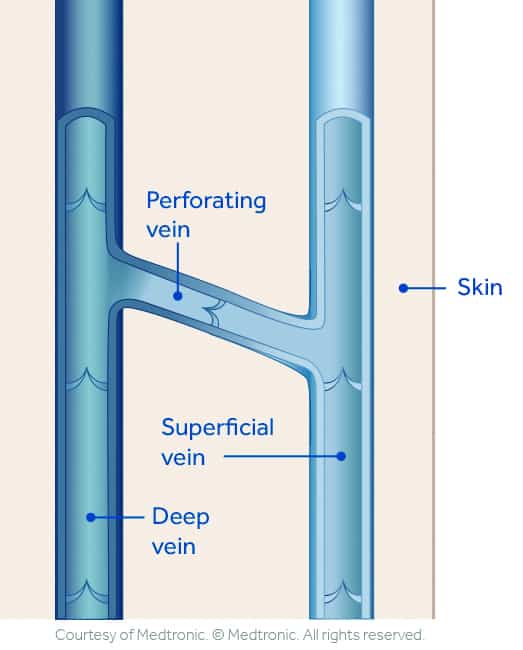
What is Venous Insufficiency (Venous Reflux Disease)?
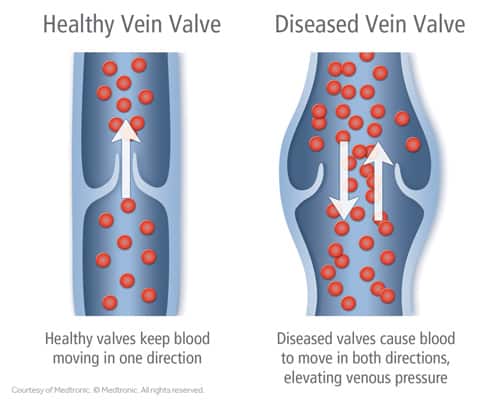
Blood flow in the veins of the leg has to work against the pull of gravity and when standing depends on leg muscle contraction to push the blood. One-way valves in the veins act to direct blood in the right direction, towards the heart, and prevent it from flowing backwards. Venous insufficiency occurs when the valves in veins begin to leak and allow blood to flow backwards (reflux) and pool. This increases the pressure inside the veins and the veins begin to stretch and become enlarged. Enlarged veins are known as varicose veins. This increased pressure can also be transmitted to other connecting veins causing them to reflux and become varicose veins.
Symptoms of Venous Insufficiency:
- Bulging varicose veins or spider veins
- Leg pain/ aching, particularly at day’s end
- Heaviness and fatigue
- Throbbing
- Cramping
- Dry, itchy skin
- Swelling
- Restless leg
If left untreated symptoms can worsen and additional health problems can result:
- Bleeding from enlarged veins
- Skin discoloration
- Blood clots and inflammation (thrombophlebitis)
- Sores or skin ulcers
Many factors contribute to the presence of venous insufficiency, including:
- Family history is the biggest risk factor
- Though both women and men can be affected, it is more common in women
- Risk increases with age
- Excess weight
- Repeated heavy lifting
- Multiple pregnancies
- Professions that require a lot of standing
- Prior deep vein thrombosis (DVT)
Diagnosis:
Diagnosis begins with a thorough examination of your legs followed by a venous ultrasound. Ultrasound allows us to diagnose and target the source of vein problems, giving a clear picture of how the veins look and are functioning. A quality ultrasound performed by a trained professional and interpreted by a qualified physician is vital to determine if vein disease is present or not. Among his many certifications, Dr. Di Iorio’s training and board certification in diagnostic radiology, along with his multiple advanced ultrasound certifications, ensures that you will receive the most complete examination and accurate diagnosis.
